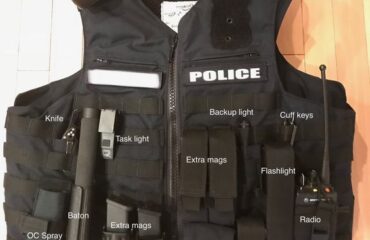Introduction
Tactical gear has come a long way from its rudimentary beginnings. With the rapid advancement in technology and materials, today’s tactical gear offers unparalleled protection, functionality, and comfort. In this blog post, we will explore the evolution of tactical gear and how these advancements have transformed the field.
The Early Days
- Basic Protection:
- The earliest forms of tactical gear were simple and focused primarily on basic protection. Soldiers and law enforcement personnel relied on leather armor, basic helmets, and simple weapons to protect themselves and carry out their duties.
- Limited Functionality:
- These early gear pieces offered minimal functionality, with no provisions for carrying additional equipment or integrating advanced technology.
The Introduction of Modern Materials
- Kevlar and Ballistic Fabrics:
- The introduction of Kevlar and other ballistic fabrics in the 20th century revolutionized tactical gear. These materials offered enhanced protection against bullets and shrapnel while being lightweight and flexible.
- Composite Materials:
- Advances in composite materials led to the development of more effective and durable protective gear, including helmets and body armor that could withstand higher levels of impact.
Technological Integration
- Communication Systems:
- Modern tactical gear often includes integrated communication systems, allowing for seamless coordination and information sharing among team members.
- Night Vision and Thermal Imaging:
- The integration of night vision and thermal imaging devices has greatly improved situational awareness and operational effectiveness in low-light conditions.
Ergonomic and Modular Designs
- Enhanced Comfort:
- Ergonomic designs have made tactical gear more comfortable to wear for extended periods. Features like adjustable straps, padded shoulders, and breathable materials reduce fatigue and improve performance.
- Modular Systems:
- Modular designs, such as MOLLE (Modular Lightweight Load-carrying Equipment) systems, allow users to customize their gear with various pouches, attachments, and accessories to suit specific missions and preferences.
Sustainability and Innovation
- Eco-Friendly Materials:
- The industry is moving towards more sustainable practices, with the use of eco-friendly materials and manufacturing processes that minimize environmental impact.
- Future Innovations:
- The future of tactical gear looks promising, with ongoing research and development focused on creating even more advanced and efficient solutions, including smart textiles, enhanced mobility suits, and AI-integrated systems.
Conclusion
The evolution of tactical gear reflects the ever-changing demands and challenges faced by law enforcement and military personnel. From basic protection to high-tech solutions, the advancements in this field have significantly enhanced the safety, functionality, and effectiveness of those who protect and serve. As technology continues to evolve, we can expect even more innovative and impactful developments in the world of tactical gear.


